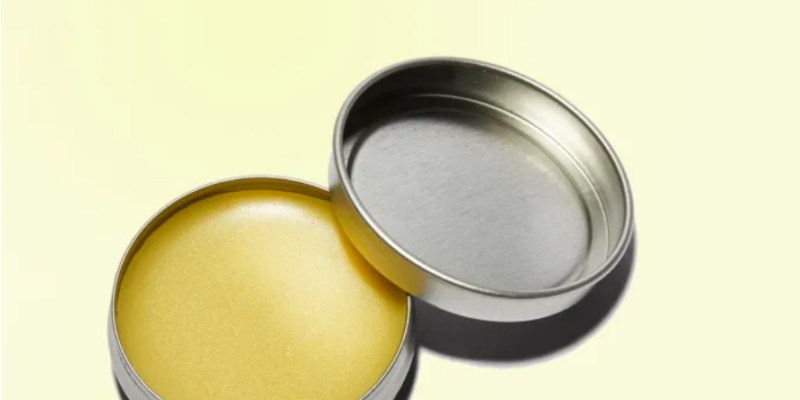Introduction to homemade lip balm
Contents
- 1 Introduction to homemade lip balm
- 2 Benefits of using homemade lip balm
- 3 Factors to consider when choosing the best time to use homemade lip balm
- 4 The importance of seasonal changes in skincare routine
- 5 Different types of homemade lip balms for different times of the year:
- 6 A. Winter: Moisturizing and protective lip balms
- 7 B. Summer: Cooling and refreshing lip balms
- 8 C. Spring and Fall: Nourishing and repairing lip
Homemade lip balm has become a must-have in many beauty routines. Not only does it provide hydration, but it also allows you to customize your favorite scents and flavors. With the right ingredients, you can create a balm that nourishes and protects your lips while avoiding harmful chemicals found in commercial products.
But when is the best time to reach for this delightful treat? The answer lies not just in personal preference but also in understanding how different seasons affect our skin’s needs. Whether it’s shielding against winter winds or keeping cool during summer heat, knowing when and how to use homemade lip balm makes all the difference. Let’s explore why timing matters and how to make the most of your creations throughout the year!
Benefits of using homemade lip balm
Homemade lip balm offers a treasure trove of benefits for your lips. First and foremost, you control the ingredients. This means no harmful chemicals or artificial additives that can irritate sensitive areas.
Customizing your formula is another perk. Whether you prefer a hint of flavor or specific moisturizing oils, the choice is yours. You can blend natural goodies like coconut oil, beeswax, and shea butter to create a nourishing concoction tailored to your needs.
Environmentally conscious? Homemade lip balms often come in reusable containers or eco-friendly packaging. It’s an easy way to reduce plastic waste while pampering yourself.
Additionally, whipping up homemade lip balm can be a fun DIY project! Involving friends or family turns it into an enjoyable activity that also promotes bonding over self-care routines.
Using homemade options supports local suppliers when you choose quality ingredients sourced from small businesses.
Factors to consider when choosing the best time to use homemade lip balm
When deciding the optimal time to apply homemade lip balm, several factors come into play. First, consider the climate. Dry and cold weather can sap moisture from your lips, making it essential to use a rich balm frequently.
Next, think about your activities. If you’re spending time outdoors or engaging in sports, reapplying lip balm throughout the day is crucial for protection against wind and sun exposure.
Skin sensitivity also matters. If you notice dryness or irritation, using a homemade formula with soothing ingredients can help restore comfort anytime.
Additionally, pay attention to hydration levels. Drinking water impacts skin health; so if you’re dehydrated, you’ll likely need extra lip care too.
Personal preference plays a role—some people prefer applying their balms at night as part of their bedtime routine while others may opt for morning applications before makeup.
The importance of seasonal changes in skincare routine
Seasonal changes significantly impact our skin’s needs. As the climate shifts, so do factors like humidity and temperature, directly influencing how our skin behaves.
In winter, cold air can strip moisture away, leading to chapped lips and dry patches. This is when rich, nourishing products become essential for protection.
Summer brings heat that may result in increased oil production and sun damage. A lighter lip balm with soothing properties helps keep your lips hydrated without feeling heavy.
Spring and fall are transitional seasons where allergies or fluctuating temperatures can cause irritation. During these times, revitalizing formulations that repair and nourish the skin are beneficial.
Adapting your homemade lip balm according to the season ensures optimal care for your delicate lips throughout the year. Embracing seasonal skincare makes a noticeable difference in maintaining healthy lips no matter what Mother Nature throws at you.
Different types of homemade lip balms for different times of the year:
Winter calls for lip balms that deeply moisturize and protect against harsh winds. Look for ingredients like shea butter, coconut oil, and beeswax. These create a barrier on your lips while locking in moisture.
As temperatures rise in summer, refreshing formulas become essential. Opt for homemade lip balms infused with aloe vera or peppermint oil. They not only cool but also hydrate your lips effectively.
Spring and fall bring transitional weather that can be unpredictable. A nourishing balm with vitamin E or honey will help repair any damage from winter’s dryness while preparing your lips to face the upcoming season’s challenges.
Tailoring your homemade lip balm to seasonal needs ensures optimal care throughout the year. Each formulation serves a unique purpose, keeping your smile healthy no matter the climate outside.
A. Winter: Moisturizing and protective lip balms
Winter can be harsh on your lips. Cold air and indoor heating strip moisture away, leaving them dry and cracked. This is the perfect time to reach for a homemade lip balm that focuses on hydration.
Opt for ingredients like beeswax, shea butter, and coconut oil. These natural elements form a protective barrier against the elements while deeply moisturizing your skin. Adding vitamin E oil not only nourishes but also promotes healing for chapped lips.
Consider adding soothing essential oils such as peppermint or lavender. They provide a gentle cooling sensation while enhancing your balm’s aroma.
Another tip is to incorporate honey into your recipe. It’s a natural humectant, which means it helps retain moisture in your lips throughout those chilly months.
Choosing the right homemade lip balm in winter ensures that you keep smiling without worrying about discomfort from dry skin.
B. Summer: Cooling and refreshing lip balms
Summer brings sunshine, adventure, and the need for hydration. Your lips are not immune to the heat. Choosing a homemade lip balm that cools and refreshes can be a game-changer.
Consider infusing your balm with natural ingredients like peppermint or spearmint oil. These oils provide an invigorating sensation while keeping your lips moisturized. Aloe vera is another fantastic addition, offering soothing properties for sun-exposed skin.
Lightweight oils such as coconut or jojoba help create a protective barrier without feeling heavy. They lock in moisture while allowing your lips to breathe.
Don’t forget about UV protection! Adding some non-nano zinc oxide can give you that extra shield against harmful rays without harsh chemicals.
By crafting a summer-specific lip balm, you’re ensuring soft, supple lips all season long. Embrace the warmth and let your homemade creation work its magic!
C. Spring and Fall: Nourishing and repairing lip
Spring and fall present unique opportunities to care for your lips with homemade lip balm that focuses on nourishment and repair. During these transitional seasons, weather changes can lead to dryness or irritation. Choosing the right ingredients is key.
In spring, as temperatures rise but still fluctuate, incorporating natural humectants like honey or aloe vera can help maintain moisture levels in your lips. These ingredients attract water and lock it in, keeping your lips soft and hydrated as you enjoy outdoor activities under the sun.
Fall brings its own set of challenges. The air becomes crisper, often leading to chapped lips due to lower humidity levels. Opt for balms enriched with nourishing oils such as jojoba or avocado oil this season. These oils provide deep hydration while forming a protective barrier against harsh winds.
Consider adding antioxidants like vitamin E or essential oils like lavender for added healing properties during both seasons. This will not only nourish but also repair any damage done over the summer months or from early winter chill.
Choosing the right homemade lip balm during spring and fall allows you to keep those delicate lips healthy all year round!
















